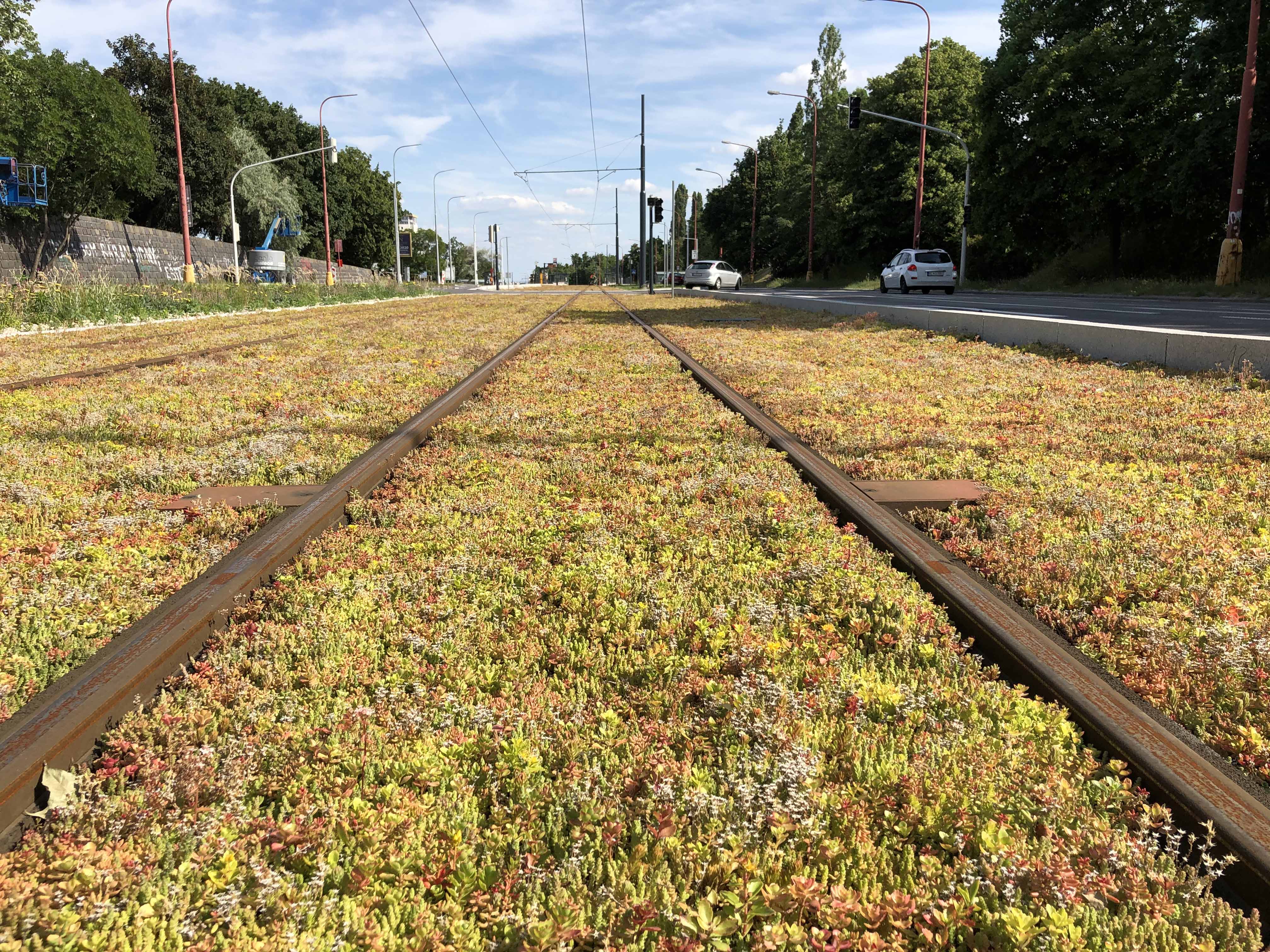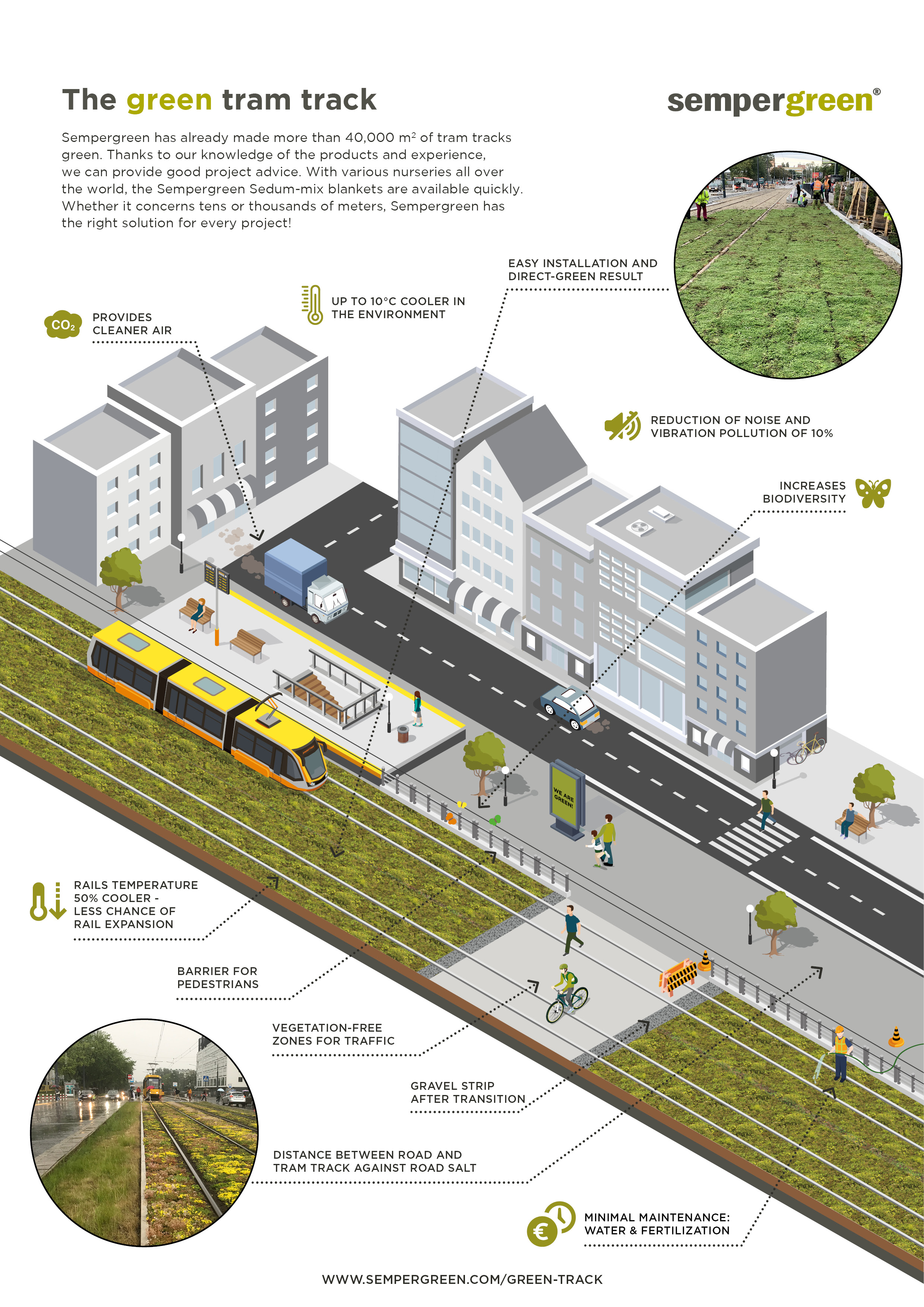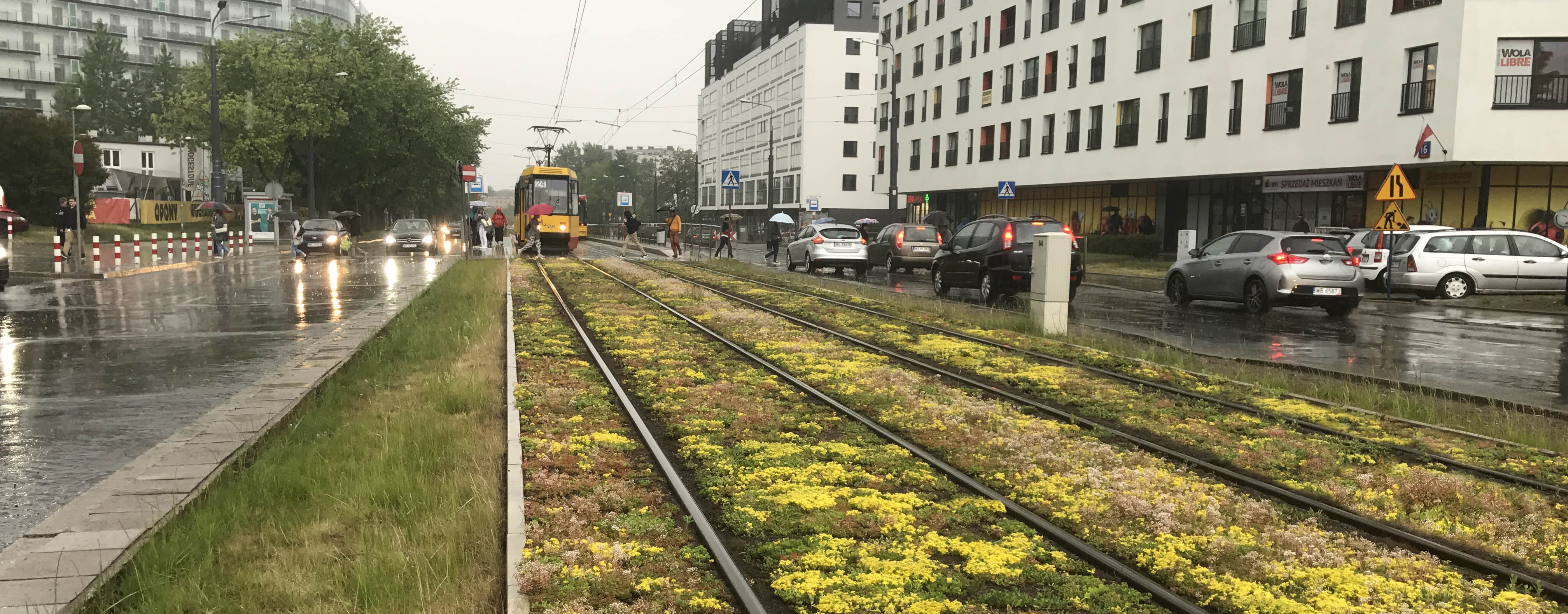Green tracks
 The space around infrastructural projects offers the perfect opportunity for more greenery. Besides traffic islands, roundabouts and embankments, tram tracks and railway lines can also be made greener. Whereas railway verges in rural areas provide a green environment, this is often not so easy in the urban environment. The space between the rails of trains and trams offers an excellent opportunity for applying more green in the city. Read more below about creating a sustainable railway.
The space around infrastructural projects offers the perfect opportunity for more greenery. Besides traffic islands, roundabouts and embankments, tram tracks and railway lines can also be made greener. Whereas railway verges in rural areas provide a green environment, this is often not so easy in the urban environment. The space between the rails of trains and trams offers an excellent opportunity for applying more green in the city. Read more below about creating a sustainable railway.
Reduction of noise and vibration pollution
There are many advantages to the greening of tram tracks. Sedum reduces noise and vibration pollution from trams. On average, a road produces 60-70 decibels of noise. A tram track equipped with Sedum provides a noise reduction of 10%.
Solution against flooding
A ballast bed or asphalt is still often chosen for application between the rails. It is mainly the latter that makes the ground hard so that rainwater can’t be drained away properly. When applying green ground cover, a suitable system structure is chosen. The underlying draining substrate layer ensures that rainwater can drain away more easily. In this way, a green tram/train track contributes to the reduction of flooding in the city.
Cooling
Plants have a cooling effect. The vegetation between the rails lowers the temperature by as much as 50%, which reduces the risk of track buckling and the need for inspections. In addition, the green tram track also has a positive influence on the temperature in the surrounding area and contributes to reducing the Urban Heat Island effect.
We at Sempergreen have years of experience with the greening of tram tracks.
View our references
Absorption of CO2 and particulates
Sedum absorbs CO2 and particulates, storing an average of 1.23 kg CO2 per square metre per year. This means that 813 m² of Sedum railway absorbs one tonne of CO2 per year. 1 tonne of CO2 is equivalent to driving almost 10,000 km in a car driving on petrol.
Biodiversity
The Sempergreen Sedum-mix blankets consist of various Sedum species and are therefore extremely diverse in colour and flowering period. The ecological value of this evergreen is therefore much higher than that of grass. Choose Sedum and welcome flora and fauna back to the city.
Low maintenance
The succulent Sedum is a perennial and does not require much care. Unlike turf, Sedum never needs to be mowed, which saves on maintenance costs. All that is required is a periodic check, watering during prolonged dry periods and fertiliser. Read more about Sedum ground cover maintenance here.
More green in the city
Municipalities and Water Authorities are pursuing an active green policy and infrastructure managers and engineering firms are also focusing more and more on green. The term infra-nature is becoming more widely known and there are all kinds of initiatives taking place to bring nature back into the urban environment. Implementing biodiversity around infrastructure is important for a pleasant living environment for people and animals. Nature areas will be better connected to each other and contribute to the expansion of the local nature network. Greening the space between rails will make cities greener and create a more pleasant living environment.
For example, there are more than 15,811 kilometres (9,824 miles) of rail in the UK alone. Every kilometre that is made greener helps in the fight against climate change!
Are you working on a project or tender? Or are you curious about the possibilities?
Thanks to our knowledge and experience, we know exactly which aspects need to be considered when installing a green tram or railway track as part of a green policy plan. Have you thought about vegetation-free zones for traffic, for example? Or a gravel strip to prevent road salt from being carried along? We like to think along with you from A to Z. View our visualisation 'the green tramway' below or contact us via the button below.
Download infographic contact us


